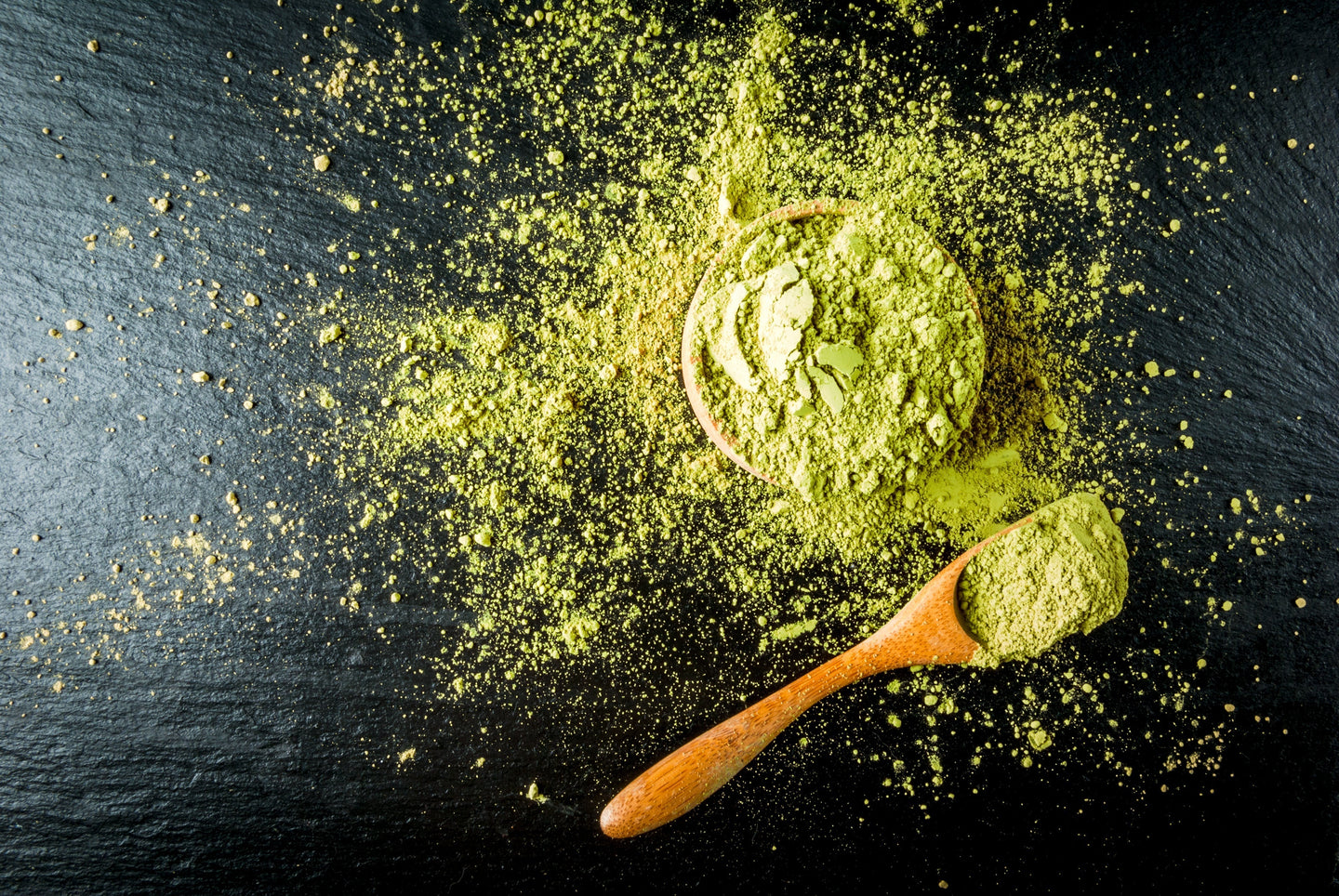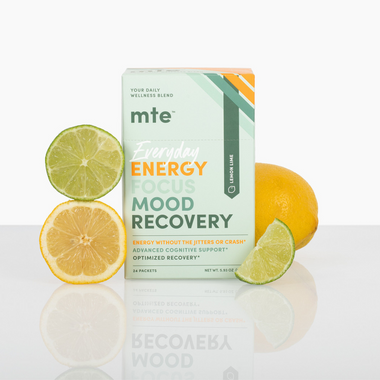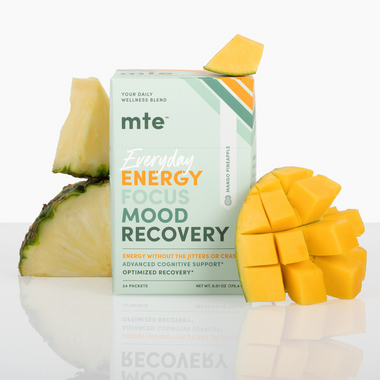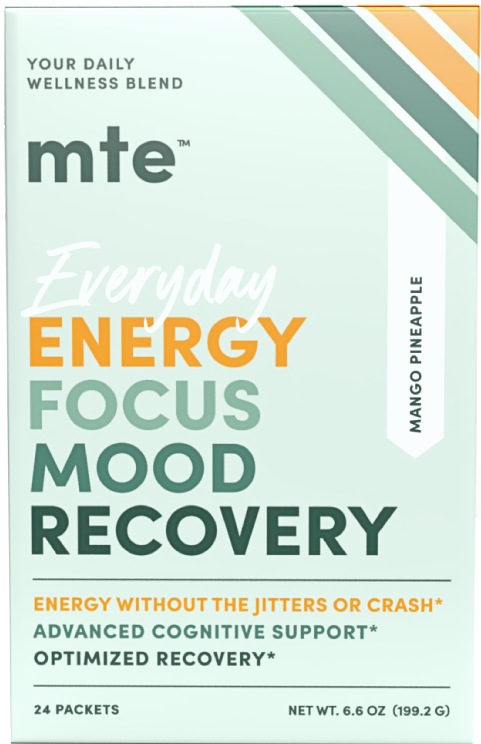
Paraxanthine: A Solution to Natural & Synthetic Caffeine
In the quest for the ultimate answer of how to stay awake, focus, be productive, sleep well, manage stress, and manage it all with a good mood in the process, we’ve come to a wall. Our over-worked, exhausted world has come to rely on caffeine as its choice nootropic for energy. But caffeine isn’t just caffeine, especially if it’s not straight out of a tea or coffee cup.
In energy drinks, preworkout mixes, and morning supplement drinks, the energy source is often labeled with vague buzz words like “clean”, “natural”, “healthy”, etc. There are several natural sources of caffeine in energy drinks; the most common of which is green or black tea. Then there’s sketchy synthetic caffeine. But now there’s a new player on the market that’s the ideal mix of natural, healthy, and high-tech: paraxanthine.
Let’s take a look behind the caffeine curtain. And then let’s talk about the solution to what’s lurking behind it:
Green Tea: The Golden Goose of “Healthy” Caffeinated Energy Drinks
Tea is one of the most popular drinks in the world, and for a good reason. It’s versatile, inexpensive, and contains antioxidants and many other compounds believed to have health-promoting benefits. For these reasons, it’s also a staple source of caffeine in high-octane energy drinks.
Tea has also been an essential part of many cultures for millennia, where drinking this beverage is associated with relaxation, socialization, and other cultural rituals. This is particularly true throughout Asia, where the tea plant (Camellia sinensis) is native. Today, the tea plant is grown all over the world, and people use its leaves to make green, black, white, red, and oolong tea.
One of the most important compounds found in tea is caffeine. This natural stimulant can boost energy and focus, helping people stay alert and productive. The ability to grow different kinds of tea leaves in many climates, just like coffee, has made it a favorite caffeinated beverage around the world – it’s simple, affordable, widely available, and takes no special equipment to make.
All these benefits of tea are easily transferred into energy drinks. And a cup of tea is the world’s go-to feel good drink, so what’s the issue? The problem is the amount. When you take a green tea extract, you can concentrate the life out of caffeine content in an energy drink. Suddenly you’re consuming 300mg of “clean green tea caffeine” in just a few gulps, feeling cracked out and, later, crashed. Like most things in consumer culture, we took something great and ruined it.
Still, at the very least you’d think that since we’ve got a source of natural caffeine – tea leaves – that natural caffeine would be the only thing you’d find in health and energy drinks, right? Nope. Turns out many companies use synthetic caffeine in their products.
But why, though?
What is Synthetic Caffeine and How is it Different than Natural Caffeine?
Although caffeine is naturally found in coffee beans, tea leaves, and around 60 other plants, companies often use artificially-produced caffeine in their products. That’s because the synthesizing process is cheap and efficient.
Synthetic caffeine is made from petroleum-derived building blocks. The process is commonly used in the food and beverage industry because it is less expensive and allows companies to have more consistent levels of caffeine in their products.
You see, the thing with natural sources like tea leaves is that caffeine content depends on many factors. That includes the type of tea, age of leaves, growing conditions, and processing method. As a result, manufacturers need more complicated processes to ensure consistent natural caffeine content levels in their products. So, many brands go with a cheaper, artificial option.
However, most consumers don’t know where their caffeine comes from. In fact, a food survey discovered that almost 50% of people are unsure whether artificial caffeine has the same effects as the natural option. And 7 out of 10 people prefer natural ingredients over artificial ones.
Here’s why that’s interesting…
Natural caffeine has the same chemical formula as synthetic caffeine. Current research states that there are no differences in how our bodies process these two compounds. Both types are supposedly broken down by the liver and eliminated from the body in the same way. In addition, they should offer similar benefits. So, if you’re looking to boost energy and focus, there should be no difference whether you choose a product with artificial or natural caffeine, right?
Well, it’s not that simple…
Although the chemical formula is the same (C8H10N4O2), the two forms have minor structural differences. Natural caffeine contains water in crystalline form, while synthetic caffeine is anhydrous. That means it doesn’t contain any water molecules. As a result, natural caffeine is more soluble in water.
In addition, some health experts believe that our bodies need less time to digest artificial caffeine. As a result, synthetic caffeine provides a quick burst of energy but also leaves you crashing faster than natural caffeine.
Another thing you should pay attention to is the caffeine content. The FDA recommends limiting a daily caffeine intake to 400mg for healthy adults. Consuming more caffeine, whether natural or synthetic, could lead to jitters, stress and other downfalls (you can read more about it in our post covering the most common perils of excessive caffeine use).
Why We Choose Paraxanthine for MTE’s Formulation
What if there were a way for an energy supplement drink to cut out caffeine and still be an effective drink for focus, brain fog, productivity, and mood? A health and fitness lab called enfinity® recently figured it out. And the studies are stacking up quickly for paraxanthine’s lack of side effects coupled with feel-good, focused energy.
Paraxanthine is the major metabolite of caffeine in mammals. When you consume caffeine, it’s almost entirely metabolized by the liver, which results in three byproducts, or metabolites. About 80% of that is paraxanthine. Previously, we could only observe the production of paraxanthine in the laboratory. But now this product of native bodily processes has been perfectly synthesized into a caffeine-free energy drink powder.
For a deep dive on caffeine vs paraxanthine, you can check out our article: Paraxanthine: So There’s a Part of Caffeine That’s Actually Healthy? For our purposes, here’s a quick rundown on the research and results of the best paraxanthine supplements:
- 2021: Cognition & Focus: One dose of nootropic paraxanthine improved cognition, attention span, memory, and reasoning at doses as low as 50mg. Chronic consumption also showed no side effects.
- 2022: Fitness: Paraxanthine supplements improve muscle mass, strength, and endurance more effectively than l-theanine, alpha-GPC, and taurine. It also improved cholesterol levels and reduced triglycerides.
- 2023: Safety & Side Effects: Paraxanthine showed no signs of toxicity even at high doses as compared to caffeine. Paraxanthine also acted protective of liver, kidney, cholesterol, and calcium levels.
- 2024: Performance: Paraxanthine increased energy expenditure, metabolism, and fat burn while decreasing heart rate, hunger ratings, and without raising blood pressure.
If paraxanthine vs caffeine is a competition, our bet is on paraxanthine… obviously. We were super excited to be one of the first daily wellness blends with exclusive access to the best paraxanthine supplement on the market. It’s nootropic support for energy, focus, mood, sleep, stress, all without caffeine.
What Is MTE?
MTE (More Than Energy) is a carefully-curated supplement drink that combines the best nootropics, adaptogens, and superfoods for a feel-good wellness blend that supports comprehensive health. We use ingredients like paraxanthine, saffron, maca, and ashwagandha to create a unique formulation that promotes innate, sustained energy. That means no irritability, jitters and crash.
Instead, MTE is all about fostering a well-balanced mood and calm energy, not to mention support for stress, sleep, immunity, and metabolism. A vegan coffee alternative, MTE is versatile – mix protein powder with it; add it to smoothies; mix AG1 with it – whatever’s your vibe. With just 11 ingredients, no sugars, additives, preservatives, artificial flavors and colors, dairy, eggs – this is actually clean, mood-boosting nootropic energy.
MTE is a perfect option for anyone looking to ditch synthetic caffeine and enjoy consistent energy throughout the day – without crashes. Check out our online shop, where you can order your first 30 days of MTE and get 15% off with a subscription!






